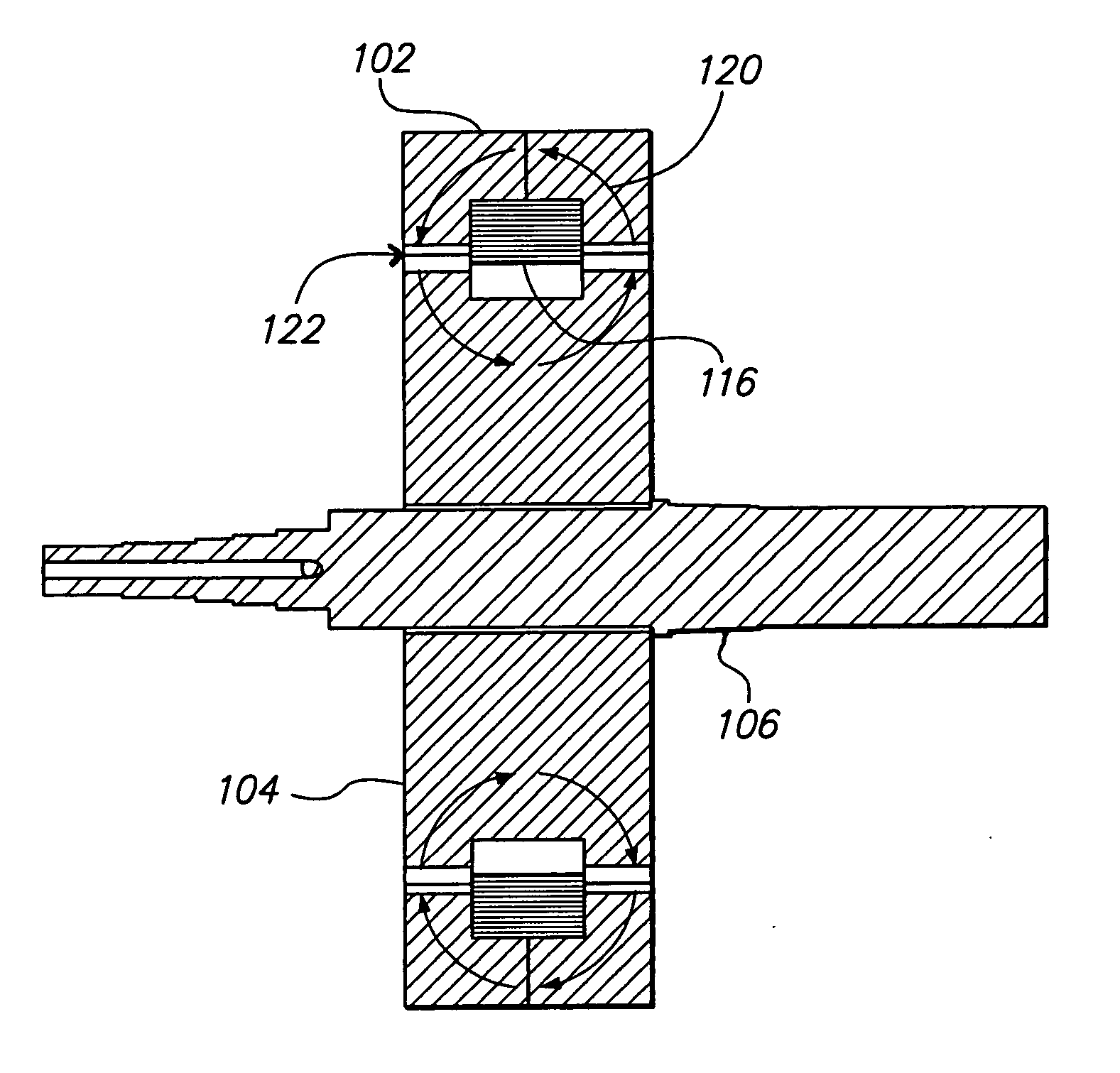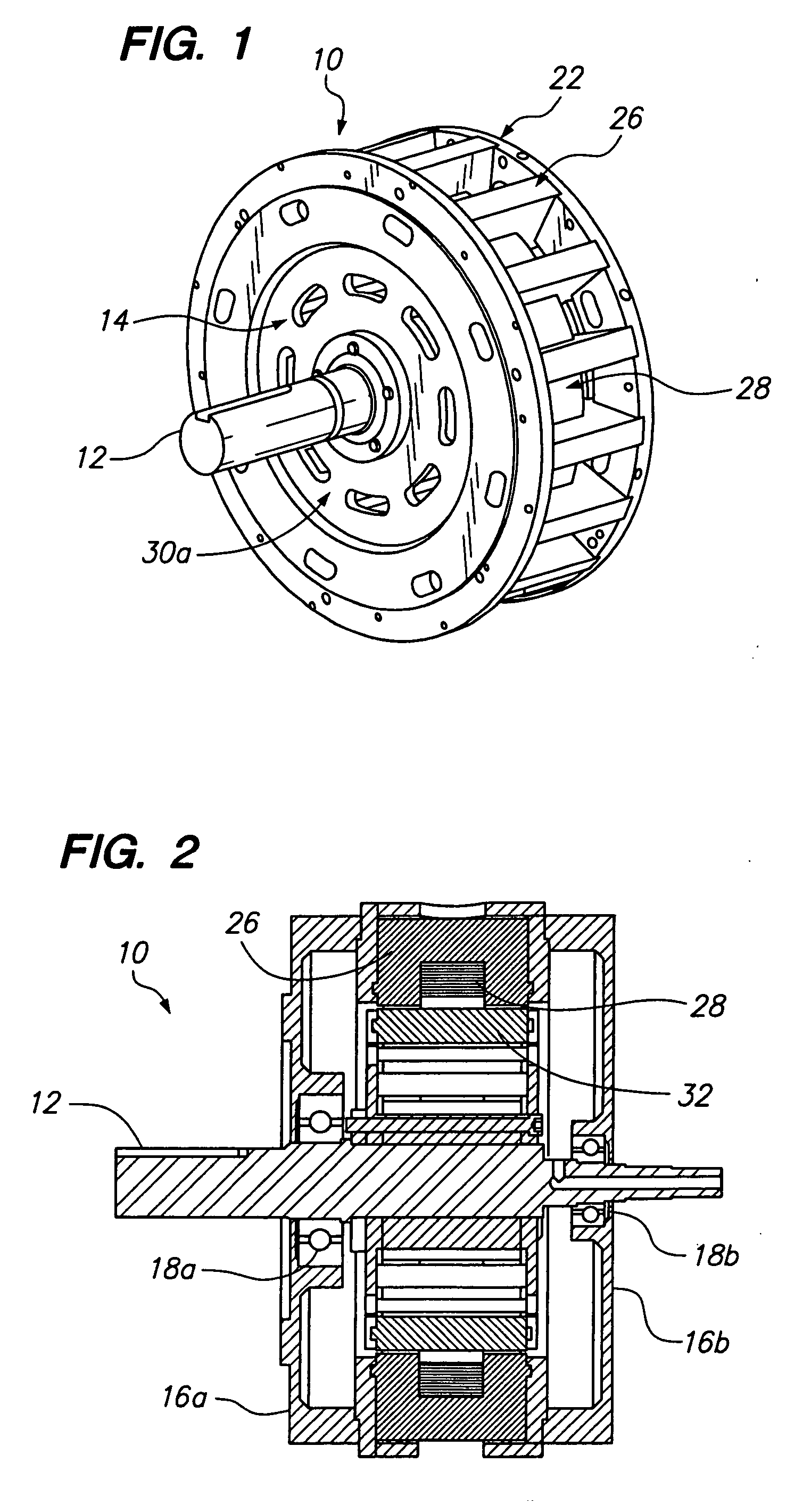Toroidal AC motor
a synchronous motor and torque technology, applied in the direction of synchronous motors, magnetic circuit rotating parts, magnetic circuit shapes/forms/construction, etc., can solve the problems of reducing the efficiency of the motor, and widening the commercialization of the synchronous motor. , to achieve the effect of expanding the storage of magnetic energy em and prolonging the gap length
- Summary
- Abstract
- Description
- Claims
- Application Information
AI Technical Summary
Benefits of technology
Problems solved by technology
Method used
Image
Examples
first embodiment
[0027] Referring now to the drawings wherein the showings are for purposes of illustrating preferred embodiments of the present invention only, and not for purposes of limiting the same, FIG. 1 is a perspective view of a toroidal motor 10 whereby the magnetic lines of flux generally follow a toroidal pattern. As used herein the term toroidal refers to a donut or torus shape. Referring to FIGS. 1-3, the motor 10 has a shaft 12 attached to and extending generally perpendicular from a rotor 14. The shaft 12 is supported within first and second end-bell housings 16a, 16b by respective bearings 18a, 18b. A motor housing 20 is disposed between the first and second end-bells 16a, 16b. As seen in FIG. 3, the motor also has a stator 22 which circumferentially surrounds the rotor 14.
[0028] Referring to FIGS. 1, 6 and 7, the stator 22 has two end-rings 24a and 24b that support a plurality of stator poles 26. The stator poles 26 are circumferentially disposed around the end-rings 24a, 24b. Each...
second embodiment
[0037] Referring to FIG. 10 the toroidal motor 100 is shown. The motor 100 has a generally circular stator 102 and rotor 104. A shaft 106 extends perpendicularly (i.e., axially) from the rotor 104. The rotor 104 is sized and configured to rotate within the stator 102. For the embodiment shown in FIG. 10, the motor 100 has sixteen rotor poles and sixteen stator poles. Because all of the poles are driven by a single coil, the number of stator poles is equal to the number of rotor poles so that all of the poles act in unison creating torque simultaneously. The stator 102 and rotor 104 is one phase of a complete motor. Three phases are needed in order to produce the necessary amount of starting torque.
[0038] Referring to FIG. 11, an exploded view of the rotor 104 and stator 102 with the shaft 106 removed is shown. The rotor 104 has rotor poles 108 spaced circumferentially around the exterior thereof. The rotor poles 108 are placed on the outside edges of the rotor 104 such that a groove...
PUM
 Login to View More
Login to View More Abstract
Description
Claims
Application Information
 Login to View More
Login to View More - R&D
- Intellectual Property
- Life Sciences
- Materials
- Tech Scout
- Unparalleled Data Quality
- Higher Quality Content
- 60% Fewer Hallucinations
Browse by: Latest US Patents, China's latest patents, Technical Efficacy Thesaurus, Application Domain, Technology Topic, Popular Technical Reports.
© 2025 PatSnap. All rights reserved.Legal|Privacy policy|Modern Slavery Act Transparency Statement|Sitemap|About US| Contact US: help@patsnap.com



